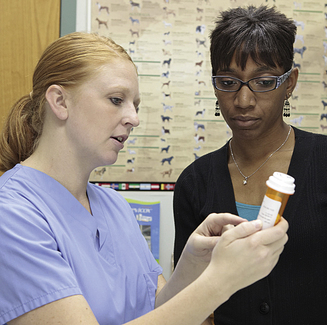CHAPTER 24

Calculations and Conversions
Mastery of the content in this chapter will enable the reader to:
• Calculate monthly finance charges.
• Calculate accounts receivable percentages.
• Calculate inventory turns per year.
• Develop an effective product markup.
• Develop an effective service markup.
• Calculate cost/benefit ratio.
• Calculate a break-even analysis.
Most of the following equations have been covered in previous chapters. The purpose of this chapter is to allow the reader to become comfortable with equations used in everyday practice. The reader should practice the examples given because practice results in improved skills. Math can be a difficult task, but with a little practice anyone can become proficient at conversions and calculations (Box 24-1).
MONTHLY FINANCE CHARGES
Items to consider when determining the cost of a statement fee:
• Cost of invoice (paper, ink, envelopes, and stamps)
• Labor (pay rate of team member preparing statements, including taxes)
• Cost per invoice is determined to be $0.99
• Labor: The team member’s hourly salary is $12, and it takes 6 hours to complete the task. Taxes are approximately 20% of the pay rate.






If a practice wishes to use both a monthly statement fee and finance charge:

Example B: What is the client’s new balance after monthly statement fees have been printed?
• Cost per invoice is determined to be $0.99
• Labor: The team member’s hourly salary is $9, and it takes 3 hours to complete the task. Taxes are approximately 20% of the pay rate.




The practice chooses to have a set monthly fee of $5 per invoice and no monthly finance charge.

ACCOUNTS RECEIVABLE PERCENTAGES
What percentage of the gross revenue is tied up in accounts receivable?



GR for a practice is $1,902,798.98. AR is 3%. What is the total dollar amount tied up in AR?


DEVELOPING AN EFFECTIVE PRODUCT MARKUP
A tablet of acepromazine costs the practice $0.10 per tablet.
• A markup of 100% = $0.10 × 100% = $0.10
Therefore $0.10 (initial cost) + $0.10 (100% markup) = $0.20.
• A markup of 200% = $0.10 × 200% = $0.20
A bottle of Rimadyl costs the practice $86.
• A markup of 100% = $86 × 100% = $86
Therefore, $86 (initial cost) + $86 (100% markup) = $172.
• A markup of 200% = $86 × 200% = $172
Dispensing Fees








Stay updated, free articles. Join our Telegram channel

Full access? Get Clinical Tree








